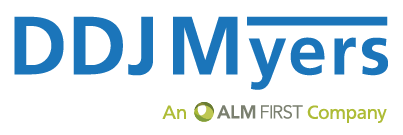Evolving response patterns to capture strategic opportunities in an ever-changing competitive landscape is the critical challenge boards and CEOs face. Often, it comes down to how effective the board is at declaring and framing the organization’s priorities and then holding the CEO accountable to achieve results. This, in and of itself, is a critical governance challenge and opportunity.
What Skills And Experiences Do Today’s Boards Need?

The “right” board portfolio of skills and experience continues to evolve. As a reference point, 10 boards recently benchmarked the future representation of skills and 71% of those directors said having a grasp of the business applications of artificial intelligence was either critically underrepresented (30%) or underrepresented (41%). These results were as expected as they were invigorating.
In these examples, board development programs and succession plans were revamped and the boards are well on their way to more effectively engaging in strategic prioritization conversations.
How Will CEO Performance Be Evaluated?
Eventually those conversations should translate into effective and measurable outcomes. Boards are increasingly embracing the criticality of rigorous evaluation processes that both hold their CEO accountable (risk and reward) for historic results and provide constructive feedback for future development and prioritization.
Often, when an organization is performing in the bottom 10% of its peer group, a contributing factor is that the board is unaware of their competitive positioning. Sometimes “goals are set” but loosely connected to the strategy and disconnected from the competitive landscape. The reality is that many boards seek to thrive, not survive. The opportunity is to tie CEO evaluation and compensation to those results.
Is Your Succession Plan Strategic?
Succession planning has always been a hot topic, and the NCUA’s final rule has shifted it to the forefront. From a governance standpoint, strategic CEO succession is the most critical and all-encompassing conversation that occurs because it touches on strategy, organizational performance, culture, governance, and compensation.
Beyond the interim and emergency plan, having a meaningful understanding of executive talent and their upside potential years in advance empowers better decisions today that can drastically improve outcomes tomorrow. Too often successors are brought in because rigorously developing the talent that will lead the organization in the future was not important (in practice) to the board or CEO. Attending conferences or receiving certifications is seen as “development” but is not necessarily the stimulus needed to generate an embodied strategic perspective in future CEO candidates.
Are You Developing High-Potential Talent?
Having a succession viability conversation can be very dignifying for aspiring candidates; they want to know what their candidacy does and does not bring to the table in the board’s eyes. Aspiring candidates want the time to develop missing skills, perspective, and leadership presence. If they’re not given a fighting chance, then there are other downstream effects.
Beyond that, investments are often only made in identified potential CEO successors whereas other high-performing talent without CEO aspirations might not receive the same kind of stretch assignments. The new CEO then inherits a team that is not as competitive as it could be. A critical governance challenge and opportunity is ensuring the organization is developing the talent it needs in the future.
How Will You Ensure Continuous Board Development?
Combining board development, director self-evaluation, and application of new skills is another strategic opportunity. There are a plethora of board development resources available. The critical governance challenge is how to provide a rubric for hungry learners to evaluate their understanding of the content. Further, providing a platform for experiential learning and application of the learning is essential to deeply understand concepts that are full of nuance.
A timely example is artificial intelligence. Understanding of this technology and its application are greatly enhanced by experiencing its power and potential. General presentations can be less impactful than content tailored to a specific institution that includes real-time examples of how AI is impacting operations and member experience. Boards should prioritize these conversations and intermix experiential learnings over periods of time, as the consequential nature of these decisions is significant. Said differently, conferences are conversation starters — they are not certifications of relevant governance expertise.
It’s a safe bet that the future will bring new and different opportunities and challenges. It’s time to recalibrate and evolve the board’s response pattern to ensure governance practices are effectively enabling the strategy, not hampering it. Simply declaring that the board will have an even more vital role in the future can begin to put energy and resources into action.
Peter Myers is senior vice president at DDJ Myers, an ALM First Company. Contact him at pmyers@ddjmyers.com.
